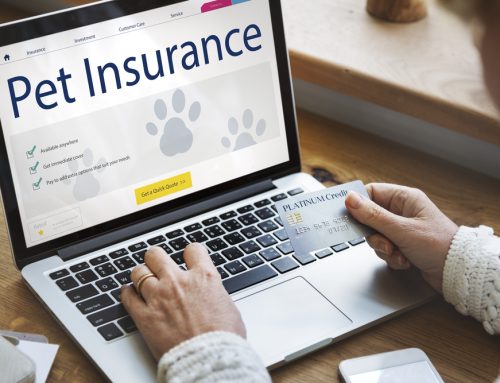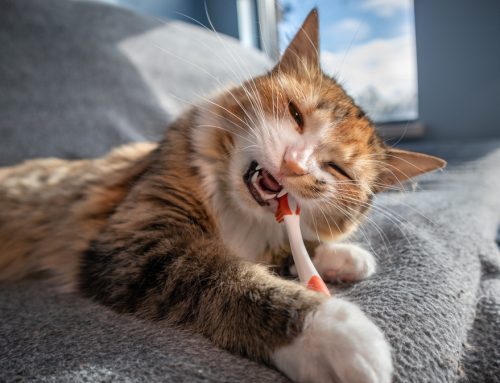Many pet owners recognize that their pet’s behavior changes when they hear a loud noise, but do not realize that their pet’s response is similar to a human panic attack, or understand that they can help their scared pet. Most dog owners will physically comfort and soothingly tell their pet, “It’s OK,” but this will not overcome their pet’s adrenaline-driven panic.
Noise aversion is a severely underdiagnosed anxiety disorder that affects around two-thirds of dogs, yet few receive treatment. In light of the upcoming noisy summer season of fireworks and thunderstorms, the LaGrange Veterinary Hospital team wants to help pet owners recognize this common condition so they will seek treatment for their pets. Here are our do’s and don’ts of pet noise-aversion treatment.
Do: Learn to recognize noise aversion signs in your pet
Startling following an unfamiliar or loud noise is a normal response, but pets should bounce back quickly and continue about their typical day. If your pet hears certain noises and their behavior changes for hours afterward, they could suffer from noise aversion. Possible signs may include:
- Trembling or cowering
- Hiding
- Attempting to escape
- Urinating or defecating
- Drooling
- Clinging to people
Do: Talk to our team about your pet’s noise aversion signs
Asking whether your pet has any noise sensitivities is not part of a usual medical history, so our team relies on you to bring up your concerns. Then, we can discuss how your pet’s noise aversion affects their life and yours. Noise aversion is a treatable anxiety disorder, and our team can help with prescription medications, management techniques, and training strategies.
Do: Work to find the best noise aversion treatments for your pet

You need to actively participate in teaching your pet to remain calm during loud noises, because medications may be the therapy mainstay, but they won’t work by themselves. Medications simply lower your pet’s anxiety threshold, so they can learn to react positively instead of negatively. You may need to try different strategies at home and different drug combinations until you find something that works well, and then stay consistent.
In addition to medications, potential treatments can include:
- Providing a safe, quiet space insulated from noise
- Playing music, making white noise, or providing your pet earmuffs, only under supervision
- Using a pheromone diffuser
- Wrapping an anxiety blanket around your pet.
- Meeting with a professional trainer to begin desensitization and counterconditioning therapies to gradually reduce noise sensitivity.
Don’t: Wait to see if your pet gets better over time
Many people believe that if their pet hears the noise repeatedly, they will become accustomed to the noise and be less afraid. But, unfortunately, the opposite is true, and repeated episodes only strengthen the brain pathways that lead to the fearful, panicked response and makes reversing them more difficult. Seek treatment when you notice a problem, so your dog has the best chance for long-term improvement.
Don’t: Overlook other related pet anxiety disorders
Researchers have found a link between noise aversion and separation anxiety, another common anxiety disorder in dogs. Whether one condition predisposes to the other is unknown, but their occurrence together likely hints at the genetic tendency. If your pet shows noise aversion signs, observe what they do when you leave them home alone, or when they are separated from their favorite person. Set up a camera if you can, and if you notice anxiety signs while you’re away, discuss the problem with our team.
Don’t: Be afraid to seek specialist help for your pet’s noise aversion
Pets with severe noise aversion who risk injuring themselves or whose destructive behavior damages the pet-owner bond may benefit from a veterinary behaviorist consultation. These specialists can prescribe specific behavioral modifications and medication regimens, and will help find your pet’s best treatment, so they stay with you in your home.
A robust and phobic response to many triggers will only worsen in your pet without treatment. The longer your pet lives with these fears, the more challenging reversing the panic response becomes. If you think your pet could have noise aversion, fill out this checklist and schedule a visit with our LaGrange Animal Hospital team, or visit a local veterinary behaviorist for additional assistance.








Leave A Comment